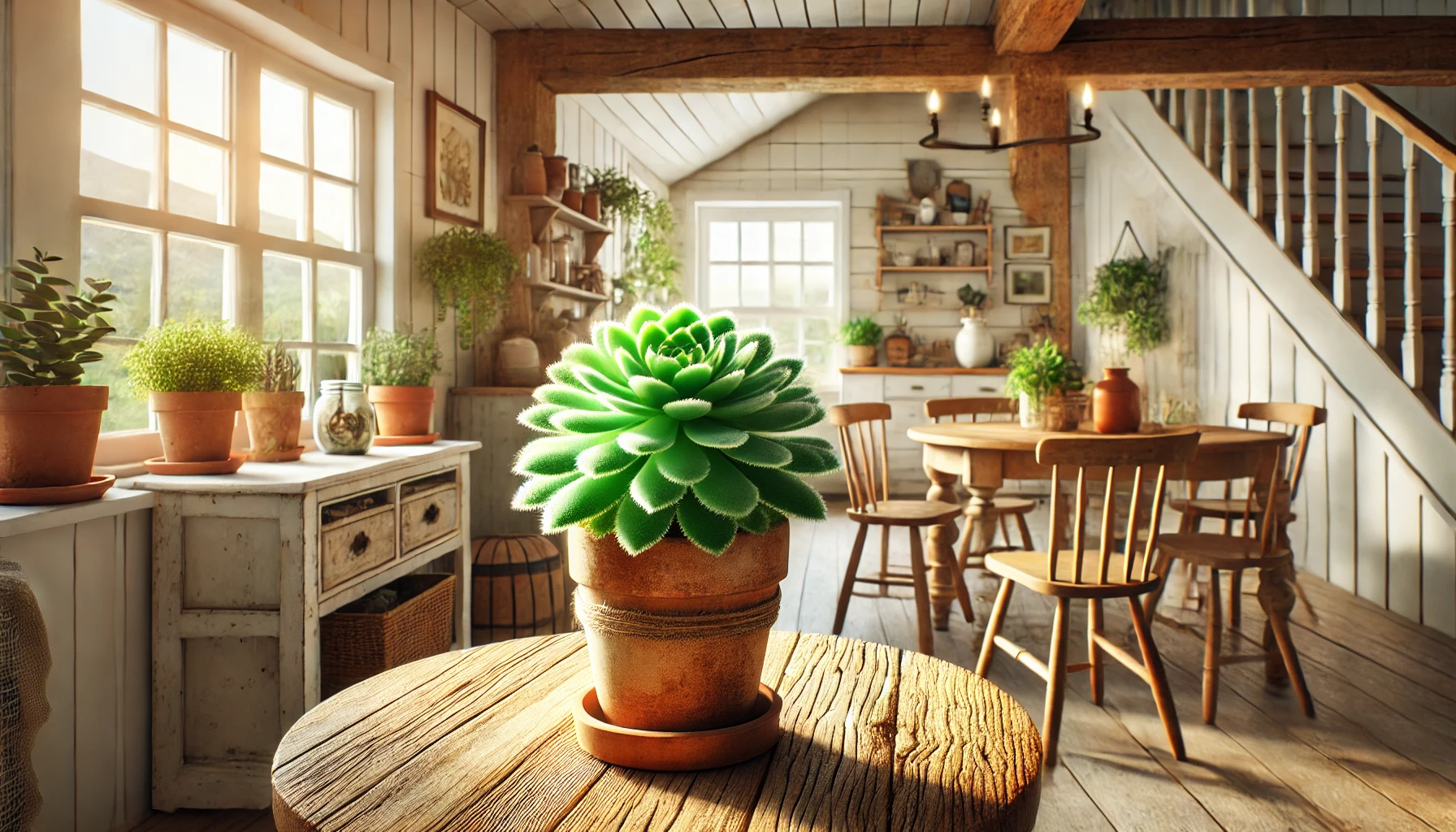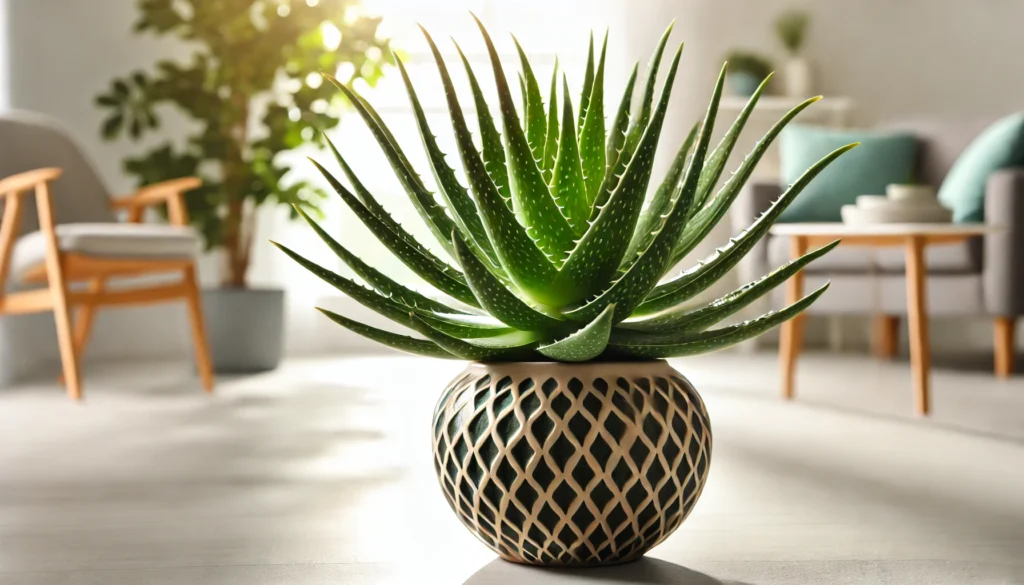
The Hens and Chicks plant, scientifically known as Sempervivum tectorum, is a hardy succulent cherished for its rosette-shaped clusters of leaves. This perennial plant is easy to grow and requires minimal care, making it a popular choice for both beginners and seasoned gardeners. It can grow up to 4 inches (10 cm) tall and spread up to 2 feet (60 cm) wide, creating a beautiful, low-maintenance ground cover in gardens or a charming addition to container arrangements.
History and Ideal Growing Conditions
Hens and Chicks have a long history of cultivation, particularly in Europe, where they were traditionally planted on rooftops to ward off lightning and protect homes. The name “Sempervivum” translates to “always alive,” reflecting the plant’s incredible resilience and ability to thrive in harsh conditions. These plants prefer full sun and well-draining soil, thriving in environments where other plants might struggle. They are cold-hardy, capable of withstanding temperatures as low as -30°F (-34°C), and are suitable for USDA hardiness zones 3-8.
Toxicity and Pets
Hens and Chicks are non-toxic to pets, making them a safe choice for households with cats, dogs, and other animals. This makes them an excellent option for indoor and outdoor gardening without worrying about the safety of your furry friends.
Best Practices for Caring for Your Hens and Chicks Plant
Caring for Hens and Chicks is simple, and they can thrive with minimal intervention.
Watering and Humidity
As a succulent, Hens and Chicks are drought-tolerant and require minimal watering. Water the plant deeply, but infrequently, allowing the soil to dry out completely between waterings. In most climates, rainfall is sufficient to meet their needs. Avoid overwatering, as this can lead to root rot. These plants prefer low humidity and thrive in dry conditions.
Soil, Light, and Temperature
Hens and Chicks thrive in well-draining soil, such as a sandy or rocky mix. You can use a cactus or succulent potting mix, or amend regular potting soil with sand or perlite to improve drainage. Place the plant in full sun to ensure vibrant colors and compact growth. While they can tolerate partial shade, too much shade may cause the plant to become leggy. These plants are cold-hardy and can survive in temperatures ranging from -30°F to 85°F (-34°C to 29°C), making them versatile and resilient in a variety of climates.
Fertilizing
Hens and Chicks do not require much fertilization. Apply a balanced, slow-release fertilizer once in the spring, at half the recommended strength, to promote healthy growth. Avoid over-fertilizing, as this can lead to weak, leggy growth.
Common Problems and Remedies
Though hardy, Hens and Chicks can encounter a few common issues:
- Rotting Leaves: Usually caused by overwatering or poor drainage. Ensure soil is well-draining and reduce watering frequency.
- Leggy Growth: Often due to insufficient light. Move the plant to a sunnier location to encourage more compact growth.
- Pests: While rare, aphids or mealybugs may infest the plant. Treat with insecticidal soap or neem oil as needed.
Invasive Potential and Safe Alternatives
Hens and Chicks are not invasive and do not pose a threat to native ecosystems. If you are looking for an alternative ground cover that is also non-invasive, consider using Sedum (Sedum spp.), another hardy succulent with similar growth habits.
Pruning Your Hens and Chicks Plant
Pruning is generally not necessary for Hens and Chicks, but occasional maintenance can help the plant maintain its appearance and health. Pruning is best done in the early spring when the plant begins to grow more actively.
Tools Needed
Use sharp, clean pruning shears or scissors. Always sanitize your tools before and after pruning to prevent the spread of disease. A solution of one part bleach to nine parts water is effective for sanitizing.
Identify Areas to Trim
Remove any dead or damaged leaves to keep the plant healthy and looking its best. Trim away any leggy growth to maintain a compact, attractive shape. It’s usually best not to remove more than one-third of the plant at a time.
Deadheading
Hens and Chicks occasionally produce small flowers on tall stalks. After flowering, the mother rosette, or “hen,” may die off. Remove the flower stalks and the dying rosette to make room for new growth.
Prune Leggy Growth
If your plant becomes leggy, prune back to a healthy rosette to encourage new growth. This will help the plant maintain its dense, compact appearance.
Remove Damaged or Diseased Leaves
Trim away any leaves that show signs of damage or disease to prevent the issue from spreading to the rest of the plant.
Shape the Plant
While shaping is typically not necessary for Hens and Chicks, you can trim around the edges of the cluster to maintain a neat, uniform appearance.
Post-Pruning Care
After pruning, water the plant lightly and place it in a sunny location. Monitor the plant for any signs of stress, such as wilting or discoloration, and adjust care as needed.
Propagation and Benefits of the Hens and Chicks Plant
Hens and Chicks are incredibly easy to propagate. The plant produces “chicks,” or offsets, which can be gently separated from the mother plant and replanted to create new colonies. These plants are not only visually appealing but also incredibly low-maintenance, making them ideal for rock gardens, borders, and container arrangements. They are also excellent for xeriscaping, as they require minimal water.
Final Thoughts
Hens and Chicks are the epitome of a resilient and versatile plant, perfect for gardeners of all experience levels. Their low-maintenance nature, combined with their ability to thrive in various conditions, makes them a must-have for anyone looking to add a touch of green to their garden or home. With proper care, these plants will reward you with their charming rosettes and minimal demands, making them a joy to grow and maintain.
Stay connected with the world of plants! Subscribe to Phylofy for expert gardening tips, DIY projects, and eco-friendly inspiration. Join our community and nurture your love for nature. Don’t miss exclusive content and updates. Subscribe now!



